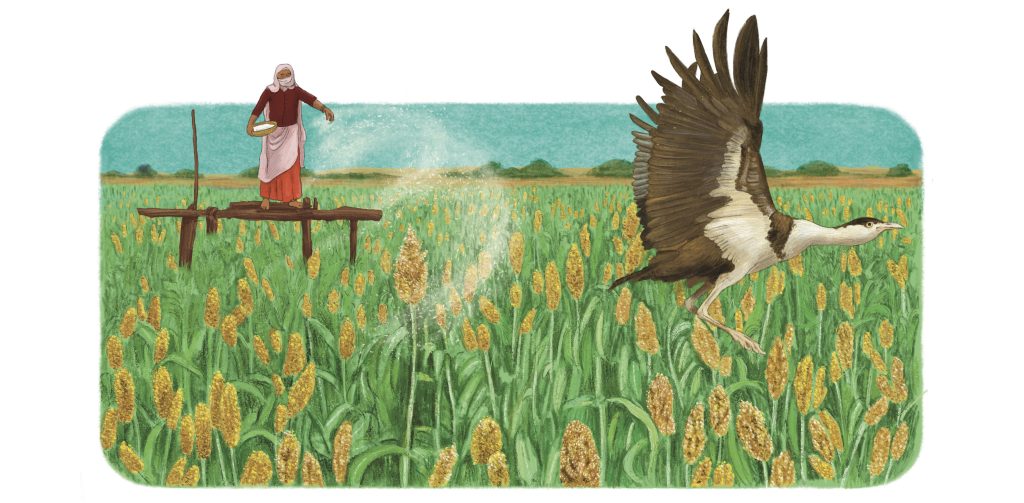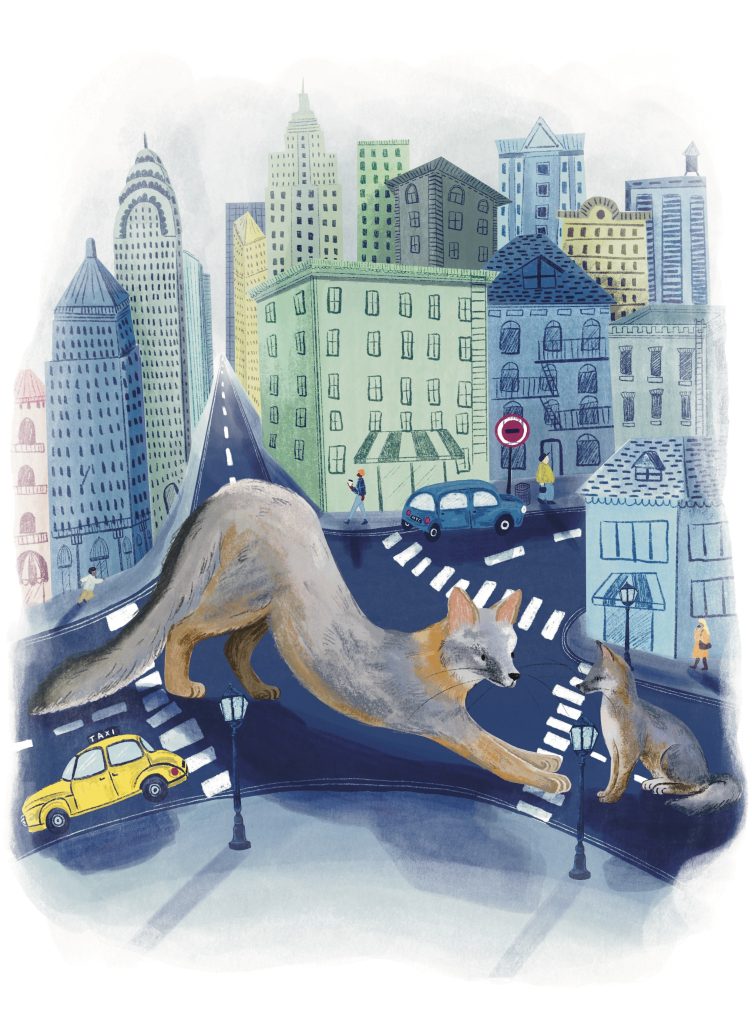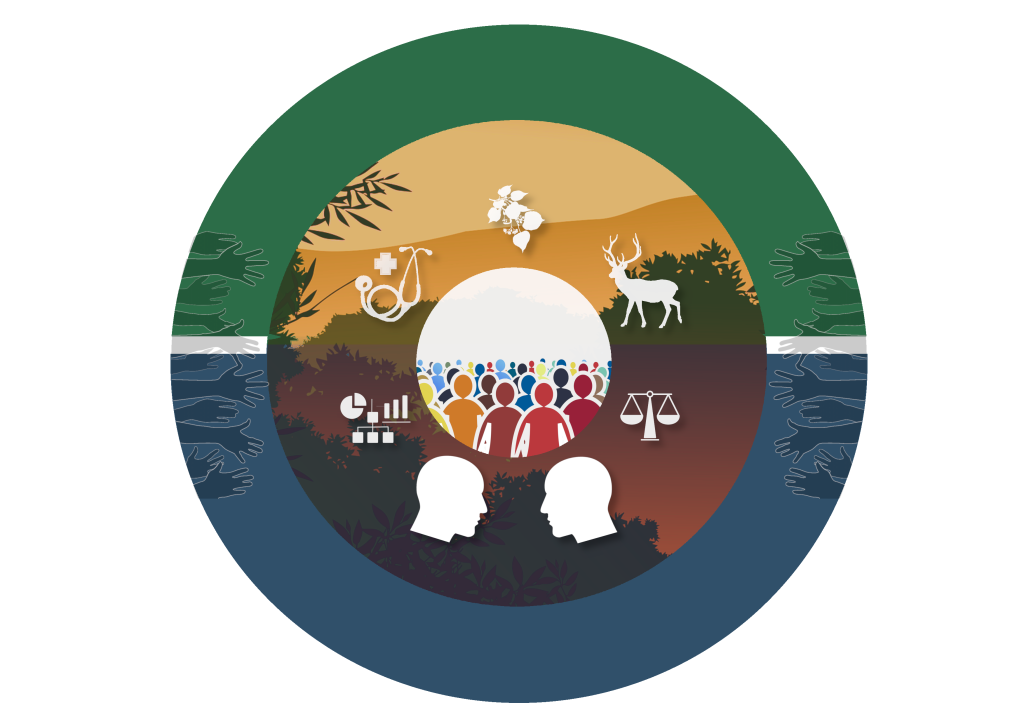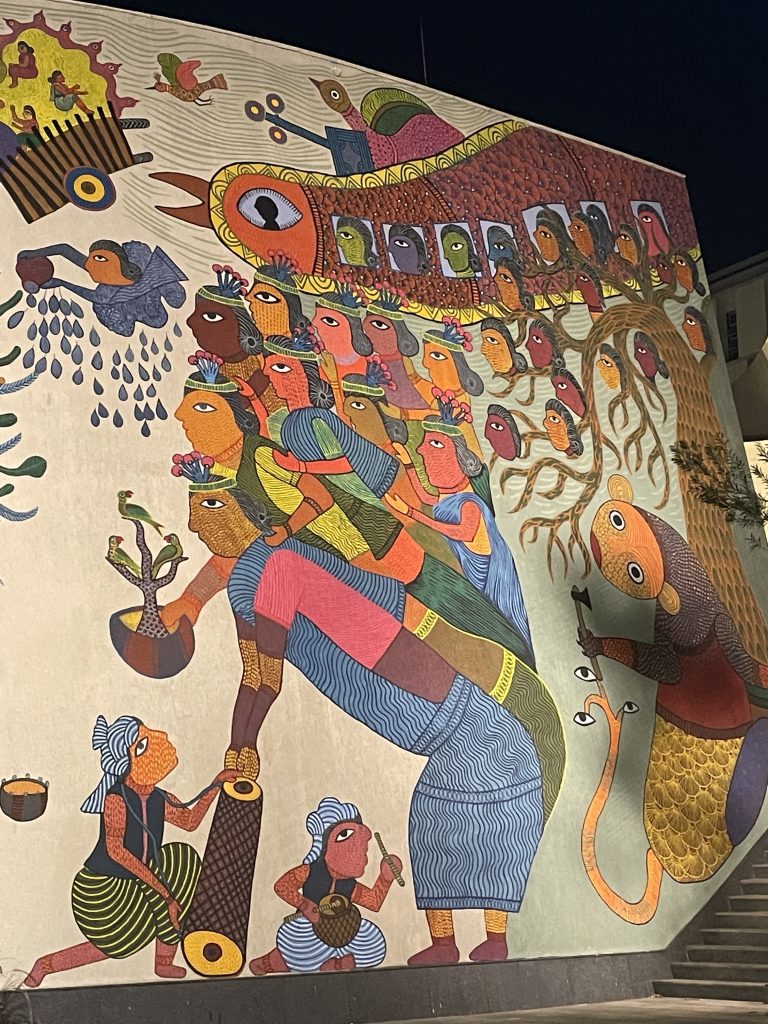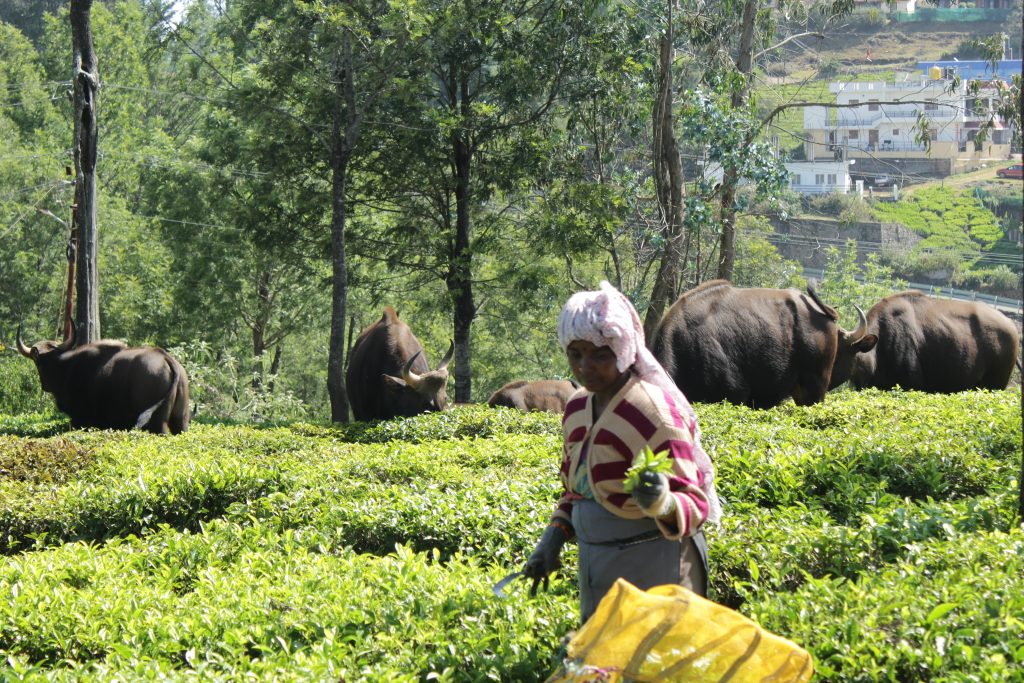The concept of ‘wilderness’ as a place devoid of humans is a dominant theme in conservation. As an ecologist based in Australia, one of the least populated countries, but one that has experienced the highest mammalian extinction rate, I am amazed at India’s rich biodiversity. With a population of over 1.2 billion, projected to surpass China by 2028, in India, humanity is everywhere. Yet it is here where the only population of Asiatic lions persist, where tigers are making a bold comeback and sloth bears are relatively common. Only in India can one say “lions and tiger and bears – oh my!” and mean it.

Contemplating this contrast on my visit to India, I find the beginning of an answer at the Dattatreya temple at Kalo Dungar, Gujarat. Legend tells of a holy man that fed wild jackals. When drought came and he had no more food to offer, he gave his own body to the starving jackals. The temple honours his selflessness and compassion, by feeding jackals, and any other animal that comes, twice each day with sweetened rice.
Throughout the diverse and rich cultural tapestry of Indian society, runs a thread that binds humans with the rest of the earth’s creatures. This thread is evident in India’s cities and villages that contain much more than the human species. It runs through ‘Ahimsa’, a core value of Hindus and Buddhists, which extends non-violence to all creatures. It weaves through India’s street dogs found napping in every alley and the people that care for them. The thread binds humans and livestock in Gujarat’s Maldharis, nomadic pastoralists that know their cows and buffalos by name, and care for them when they are too old to provide milk. The thread is revealed in simple everyday interactions, such as a truck driver who waits patiently for a cheeky macaque to drop the keys he stole from his vehicle.
When I ask with incredulity about the inevitable conflicts that are bound to emerge in such a dense and multi-species landscape, the thread becomes particularly evident. Time and again I encounter the same acquiescent answer: “sometimes it happens”. “Sometimes… tigers eat people, gaur stampede through villages, bears maul people, elephants chase people, nilgai consume crops, wolves hunt sheep, leopards hunt dogs and chase them into people’s homes”.

A testament of coexistence is after all the ability to accept that those we share our space with, can at times cause us harm, and value them nonetheless. Freelance BBC documentary maker Kalyan Varma, has been accompanying the Dhangar herders on their migration. He tells me that these nomadic pastoralists can be exceptionally tolerant of predators, even though they do kill their sheep. “One day, as I was sitting with the herders, a wolf snuck into the pen and ran off with one of their sheep,” he tells. Instead of setting off to kill the wolf, the herder just shrugged and said, “Well, they have to eat too”. The Dhangar herders even appreciate the wolves because they are “good for the sheep by helping keep them on the move and ensuring the land is not overgrazed”.
Stories and laughter are exchanged around the table, as I ask my hosts about the extraordinary ways humans and wildlife live together in India. Sandeep Virmani, founder secretary of Sahjeevan, a community development organisation in Gujarat, tells us of a leopard that was hunting goats belonging to a Jain community. The Jain religion follows strict measures to maintain non-violence, making most Western vegans look heartless in comparison.
“They asked the forest department to catch and relocate the leopard,” Virmani tells. Translocating a wild animal requires a permit, and the bureaucratic system in India can be sluggish. “They waited and waited and the leopard kept killing their goats,” he continued, “so eventually they got fed up and built a trap”.

The trap was successful, and with the leopard secured in the cage, they contacted the forest department once again. But the authorities exclaimed that they had no permit to trap a leopard, hence ensuing a long bureaucratic mess. In the meantime, the villagers grew worried that the trapped leopard would be getting hungry. “They wouldn’t kill a goat, so instead they got together and cooked up a large meal of rotis, and other traditional vegetarian dishes, but the carnivore would have none of it,” Virmani laughs. “When finally after days of debate the forestry official arrived to relocate the leopard, he was shocked to find the large cat hungrily eating rotis”.
Sometimes, however, violence to animals happens too. Even this can be met with a degree of tolerance. Abi Vanak, a fellow of the Ashoka Trust for Research in Ecology and the Environment, studies carnivores in human-dominated landscapes. He was assisting a team that had gone to rescue a leopard trapped in a sugarcane field. The leopard had attacked some villagers who had gone to chase it away, and an irate mob had formed. Before the relocation team could carry out their task, the mob took matters into their own hands. “There was nothing we could do,” Dr Vanak explains sadly, “they were intent on killing the leopard and no one was going to stop them”. With sticks and axes “they killed the leopard right in front of our eyes”.
Years after the event, Dr Vanak still contemplates what should have been done with the killers. “We could have dragged them before the court, sent them to jail, but then what?” he asks. “Had we done that, the leopard would have truly become the enemy”. By letting things boil over, a measure of “coexistence was re-established”. Such a momentary and brutal eruption of violence may act as catharsis by allowing people to move on with their lives, content that predators that have “misbehaved” have been dealt with and the order has been restored.
Killing animals is certainly not taken lightly in India. Farmers who have lost their crops to wild animals may still be reluctant to retaliate with lethal force, even when it is legal to do so. Some states allow wild herbivores, such as nilgai, to be killed when they raid crops. However, deep-rooted cultural values limit the number of farmers who opt for this course of action. In a country where many venerate cows, it can be particularly hard to contemplate killing an antelope whose name (nilgai) literally means ‘blue cow’. Some have resorted to changing its name.

In some conservation-dedicated areas of India, however, humans and wildlife are strictly separated. Areas designated as tiger reserves, in particular, delineate no-go zones for humans. In Panna Tiger Reserve, Madhya Pradesh, we are allowed to drive only through parts of the park, in the company of a guide, and are mostly prohibited from stepping out of the vehicle. The local villagers that lived inside the park’s boundary were evicted several years ago, to make way for “nature”.
Panna is indeed a haven for wildlife, containing an extraordinarily high density and diversity of ungulates and other creatures. The tigers too are doing well, and are monitored closely—very closely—by the rangers. They have learned a harsh lesson. By 2009, Panna had lost its entire tiger population to poachers. Raghu Chundawat, who closely studied the tigers at the time, had alerted the authorities to the declining population, and the evidence of dead tigers, but to no avail. “We could see that the tigers were disappearing,” Dr Chundawat explains. “The official tiger counts were being inflated allowing the poachers to wipe out the entire population”. Tigers have since been reintroduced into the park and their numbers have increased steadily.
Like most of India’s national parks, Panna is small, a mere 500 km2. Thus, most of India’s wildlife must live among humans. The world’s only Asiatic lion population in Gujarat is recovering and is spilling out of the Gir Protected Area. The population has nearly doubled in the past two decades, with a current estimate of over 400 lions, a quarter of which live in human landscapes. Concurrent with the recovery are increased incidents of livestock losses, and the loss of human life as well. India, however, remains dedicated to the protection and recovery of its dangerous wildlife.
India’s conservation record is far from perfect, evident by the extinction of the cheetah, continuing (illegal) persecution of wolves and leopards in many regions, severe poaching problems, and cases of intense resentment and violence towards wildlife. Even conditions of apparent harmonious coexistence may in some cases mask severe social repressions, marginalisation and apathy. Yet India has some of the oldest known conservation and animal rights laws and proves that it is possible for high human density to coexist with other species.
India’s success appears to stem from an unshakable belief in the sacredness and inherent value of earth’s creatures. While this is a shared value worldwide, Western conservation tends to advocate for anthropocentric and utilitarian values, often due to a belief that empathy is a weak motivator for conservation. Yet, India reveals that compassion and empathy are key to preserving the earth’s biodiversity in a human-dominated world.
Sitting on the crowded plane as it departs Mumbai, I wonder whether the main conservation imperative of our time is not to reduce our human footprint, but instead to increase our humane footprint. As our global population of 7 billion charges forward, we should take a leaf out of India’s book.
Acknowledgment
I am grateful to my gracious hosts, particularly Dr Abi Vanak, ATREE, who took me by the hand and made me feel utterly at home on my visit to India.
Further reading:
Agoramoorthy G, VV Kumar & P Patel. 2011. Rice-eating jackals of the Rann of Kachchh. Current Science, 101(7), 828.
Bekoff M. (Ed.). 2013. Ignoring nature no more: The case for compassionate conservation. University of Chicago Press.
Ramp D & M Bekoff. 2015. Compassion as a practical and evolved ethic for conservation. BioScience, doi: 10.1093/biosci/biu223
Vucetich JA, JT Bruskotter & MP Nelson. 2015. Evaluating whether nature’s intrinsic value is an axiom of or anathema to conservation. Conservation Biology, 29(2), 321-332.
Photographs: Abi T. Vanak, Kalyan Varma, Kadambari Devarajan, Arian D Wallach

